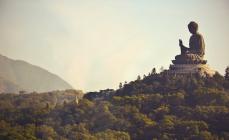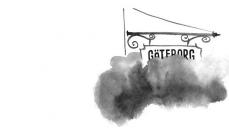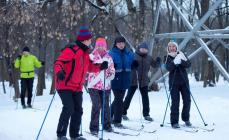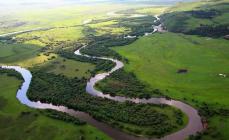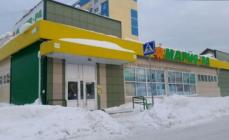Habitual, civilized and clean, without exotic plants, poisonous insects and scorching sun - these are, of course, the Baltic resorts. They are seductively close - you can fly to sunbathe for a long weekend.
Estonia
One of the pleasant Baltic surprises (this applies to all countries) is the abundance of quite decent beaches right next to the capitals, so you can combine beach holiday with walks in picturesque medieval towns. So, in Tallinn alone there are five beaches - Pirita, Stroomi, Harku (on the lake), Kakumäe and Pikakari. Their only downside is crowding. At the height of the season, tens of thousands of people come to Pirita alone on weekends. A few more less crowded public beaches are at a distance of half an hour by public transport.
The city of Pärnu is called the summer capital of Estonia - a suitable place for family vacation, since the water near the coast is shallow, the sand is soft, and the Tervis Hotel has a children's water park. Adults can go to Narva-Jõesuu - this resort has the largest nudist beach in the country. Finally, the spa resorts of Estonia are Haapsalu and Saaremaa. 
Latvia
The most obvious beach holiday destination in Latvia is, of course, sunny Jurmala. You can get to this resort from the center of Riga in 20 minutes by fixed-route taxi. At the same time, the beaches of Jurmala with large white sand are beyond praise - for example, Majori and Jaunkemeri have received more than once blue flags. There are opportunities for kiting and windsurfing, renting yachts and jet skis.
If Jurmala is a fun and party place where life is in full swing by Baltic standards 24 hours a day, then Saulkrasti is a corner of calm, more like a cozy holiday village than a resort. But the sea there, unlike Jurmala, is quite deep - you can already swim very close to the coast. Finally, Liepaja is suitable for cultural holidays with visits to museums and numerous music festivals, and along with evening walks along the beaches in search of pieces of amber. 
Lithuania
Lithuanian "pearl by the sea" - Palanga, recreation center. In addition to gentle water and comfortable sandy beaches, there are healing mud, the effect of which is complemented by clean coniferous air. With children, it makes sense to go to the village of Sventoji near Palanga - it is quiet there, the sea is shallow and there are many family activities such as an educational forest trail with puzzles and playgrounds.
"Urban" and at the same time a beach option - Klaipeda with many architectural sights and good nightclubs. From there you can take a ferry to the reserved Curonian Spit. And if you want to relax closer to nature, you should choose the Neringa resort, for example, the village of Nida with the cleanest beaches. The Lithuanian authorities take care of the ecological situation in this area so much that they even banned any construction here. 
Russia
Do not forget that Russia has its own outlet to the Baltic Sea, and, accordingly, its own Baltic beaches, and even its own part of the reserved Curonian Spit. You can go to the port Baltiysk - the most western city our country, but it is better to sunbathe and swim in the vicinity of Kaliningrad, for example, in Zelenogradsk. For special impressions, you should go to the village of Yantarny - where divers can dive in the lake, which is a flooded amber quarry. 
Most children in the seaside resorts of Latvia, Lithuania and Estonia either do not react at all to changing weather conditions or endure them very easily. Therefore, parents will not have problems with the notorious acclimatization of the child, even in the midst of summer.
Coniferous (mainly pine) forests stretch along the entire Baltic coast, thanks to which the air in seaside resorts is not only very clean, but also healthy, due to the presence of phytoncides emitted by the resin of coniferous trees.
Meals in almost all hotels are organized according to the "buffet" principle, and also contain dishes most suitable for small children, for example, cereals boiled in milk or water, mashed soups with meat or vegetable broth. In any case, ask the tour operator about food.
In addition, in many Baltic hotels, cooks, at the request of parents, can prepare separate dishes for children.
Finally, due to the cooler climate and stricter hygiene regulations, the likelihood of food poisoning, intestinal infections in the Baltics is immeasurably lower than in many southern countries(including very popular in Egypt and Turkey).
Where better to relax in the Baltics with children
Back in the days of the USSR, the most popular resorts in the Baltics, Palanga (in Lithuania) and Jurmala (in Latvia) were considered. And now parents can choose any of these resorts. The choice depends, first of all, on the age of the child and on whether the parents plan to visit the surrounding sights with him.
Jurmala is designed for energetic tourists, especially since the Latvian Riga with a lot of interesting sights is located not far from it.
Walk through the beautiful historical center Rigi will surely deliver great pleasure not only to parents, but also to children (of course, if they are no longer the smallest).
In addition, Jurmala has more opportunities for active children's recreation(for example, it has good water park, children's ground attractions). In the city of Klaipeda, located near Palanga, there are also attractions, but they are much smaller. Palanga is considered calm resort with more low prices, so there lovers of quiet rest.
Parents who want to provide their child with peace, quiet and home comfort can also rent accommodation in the private sector.
1 day Moscow - Minsk
Joining / detaching from a group in European cities is carried out only after a written agreement with the direction managers, before booking air or railway tickets to the place of joining / detaching.
Departure from the Belorussky railway station by train No. 3 (on even days) or No. 7 (on odd days) at 22:03 or by other train, meeting to receive documents in 40 minutes. before departure (guide, train and car number, see section one week prior to departure).
2 day Minsk - Vilnius - Trakai* - Trakai Castle*
Arrival in Minsk early in the morning (at 06:31).
Overnight at the hotel in Riga.
Day 7 Jelgava - Klaipeda
Breakfast in the hotel.
Departure to Klaipeda, by road (~ 40 km) - short inspection Jelgava, former capital Duchy of Courland: Mitava (Jelgava) Palace, Church of St. Anna, etc.
Moving to Klaipeda (~ 260km). Inspection of Klaipeda with an attendant. Klaipeda - an old port cityon the Baltic coast, at one time belonged to the knights of the Teutonic Order, then was the capital of Prussia. The German influence was reflected in the architectural appearance of the city - half-timbered buildings, churches, the building of the Post Office, etc.
Klaipeda is famous not only for its sights, but also for its beaches, which have been awarded the "blue flag" for meeting the high quality standards of the EU.Free time.
Overnight at the hotel.
Day 8 Klaipeda - Curonian Spit* - Nida*
Breakfast in the hotel.
Rest on the sea.
For those who wish, a trip* (~50 km) to the Curonian Spit (€30, transfer + ferry). Curonian Spit is sand dunes, one of the highest in the world, white sandy beaches, a place of inspiration for writers and artists (Thomas Mann idr). Moving to a resort town
Afternoon transfer to Kaunas (~236 km). Brief tour with an escort: City Hall "White Swan", "Perkūnas House", Kaunas Castle, etc.
Transfer to Minsk (~285 km).
Day 10 Minsk - Moscow
Departure by night train No. 96 at 05:40 or by other train. Accurate andinformation on train number and departure time - in the section .
If you purchase tickets on your own, it is important to leave Minsk for your city not earlier than the main group. The fact that a tourist has a ticket for an earlier train than the main group does not constitute grounds for changing the group's schedule.Arrival in Moscow at the Belorussky railway station at 16:26.
European beach holidays have not always been just Mediterranean. A century ago, the resorts of the Baltic Sea attracted emperors, duchesses and celebrities no less than anywhere else on the French Riviera. Indeed, a lot of Europeans still spend their summers on the Baltic coast. In addition to endless white sand beaches, this region offers great spa resorts, quiet fishing ports and unforgettable experiences. And yet it remains out of sight of almost everyone except those who live in its immediate vicinity, leaving the coast relatively free to develop their own unique, local identity.
It was on Rügen that the Baltic beach craze first began, thanks to 19th-century aristocrats seeking to promote coastline islands as a prestigious place for sick citizens.
It's still a delightfully inviting mix of neoclassical villas, marinas and sandy beaches dotted with the Strandkörbe - sheltered wicker spots that have become something of a German seaside cliché. The most impressive of the beaches is at Prora, a wide bay famous for its gigantic, resort complex Nazi era, which extends 4.5 km behind the coast.
Sandy sands, shifting dunes and quiet forests characterize the landscape around Leb, a working fishing port that is also great place for eating halibut and chips. The local dune landscape also holds historical secrets: just behind the beach, 3 km west of the village, is the Launchpad Museum, which displays a rocket test site used by Germany during World War II.

Halfway between Poland and Sweden, but actually part of Denmark, the island of Bornholm boasts half-timbered houses, historic churches and an abundance of amazing beaches. The famous White Dueodde Strand on the southeastern tip of Bornholm is insanely popular in the summer, but at 7km long it seems spacious enough to accommodate the crowds.

If during the summer the Lithuanian capital Vilnius looks a bit deserted, it's probably because everyone went to Nida, (almost) perfectly preserved fishing village, which stands on a 100-kilometer cape known as the Curonian Spit. Nida's well-maintained manor gardens are dull, although the undulating line of huge dunes to the west gives the place an austere, otherworldly appearance.

The longest beach in Europe stretches for 40 km along the northern shores of Usedom, a lush green island located about 200 km north of Berlin. Known as the Kaiserbeder or "Imperial Spas" because of their popularity with the Prussian royal family (Kaiser Wilhelm II was a regular visitor), the coastal towns of Ahlbeck, Herringsdorf and Bansin Revel boast pointed seaside villas and neatly manicured parks.
.jpg)
The Latvian City of Liepaja boasts at least three different personalities: it is a calm seaside resort, a bustling market town and former Russian naval base. Backed by the green embankments of the seaside park, the beach itself is a pristine stretch of sand that you are likely to find on west coast Latvia, and good place for amber hunting after storms.

The Polish resort of Sopot was once a destination for the rich and famous who came from all over the world to enjoy the high life and casinos in the 1920s and 1930s. He still has his former swagger. It offers excellent sand beach, a fashionable promenade and the famous pier.
.jpg)
Few places have such a desolate end-of-the-world feel as Cape Kolka, a horn-shaped spit backed by the enchanting depths of dunes, swamps and forests. Located at the point where the Gulf of Riga meets by the Baltic Sea, it is famous for the waves characteristic of chevrons, caused by the currents of the bay, which flow into the currents of the open sea. There is nothing special here, except for the scattered houses of the local village; an ideal area for lighting fires, watching sunsets and long meditative walks.

A former favorite of Russian tsars, the Estonian resort of Haapsalu is as quaint an old resort as any, with narrow lanes of wooden cottages and majestic neo-Gothic villas that look proudly out to sea. There are also beautiful beaches here: white sand Paralepa on the western side of the city and dark, muddy and salubrious Aafrica Rand to the east.

For a touch of glamor with a bohemian edge, your best bet is to take a ferry to Gotland, a sun-drenched island 100km east of the Swedish coast. Here it is medieval city Visby, protected by UNESCO, as well as beaches with picturesque dunes, such as Tofta on the west coast and Ljugarn in the east, which attract young people from Stockholm in summer.



